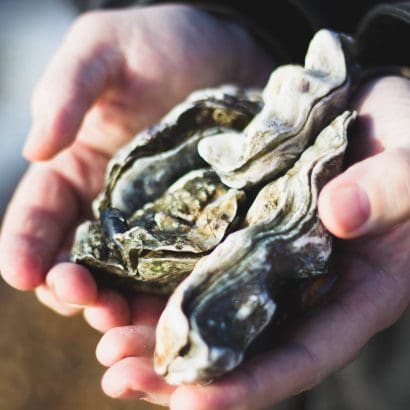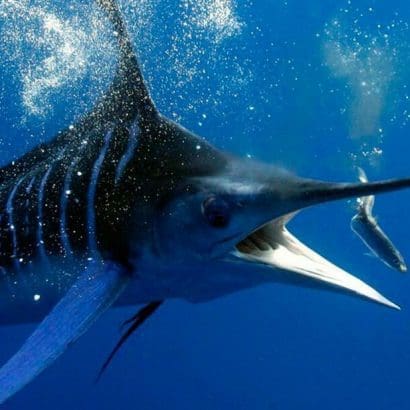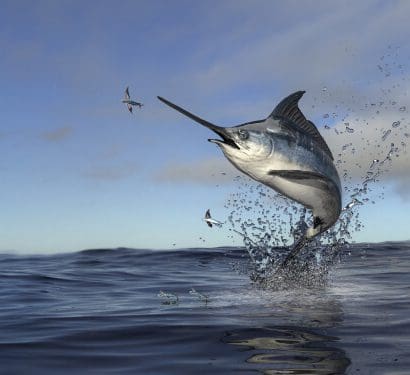
The swordfish, also known as Xiphias gladius, is a majestic creature that roams the depths of the ocean. With its sleek body, distinct features, and remarkable abilities, this magnificent fish has captivated the curiosity of marine enthusiasts and scientists alike. In this article, we will delve into the world of the swordfish, exploring its astonishing speed and unparalleled hunting abilities. Prepare to be amazed as we unravel the secrets behind this formidable predator and uncover the marvels that make it one of the ocean’s most fascinating creatures. From its lightning-fast movements to its unparalleled hunting techniques, the swordfish is a true master of the underwater realm. Join us on this journey of discovery as we dive into the extraordinary world of the swordfish and uncover the wonders that lie beneath the surface.
Contents
Description of the swordfish.🐟
The swordfish, scientifically known as Xiphias gladius, is a remarkable species that inhabits the world’s oceans. It is characterized by its elongated, streamlined body and a long, flat bill-like extension called a “sword,” which gives it its name. The swordfish is a large predator, reaching lengths of up to 11 feet (3.3 meters) and weighing over 1,400 pounds (650 kilograms).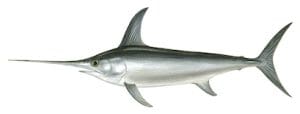
Physical Appearance:
The swordfish possesses an elongated and streamlined body, allowing it to move swiftly through the water. It has a dark blue-black coloration on its upper body, which helps it blend into the depths of the ocean, while its underside is silver-white. The swordfish has a muscular physique, and its crescent-shaped tail fin and tall, rigid dorsal fin contribute to its overall agility and stability.
Sword-like Bill:
One of the most striking features of the swordfish is its bill, which resembles a sword. The bill can be exceptionally long, measuring up to one-third of the fish’s total body length. It is flat and sharp, enabling the swordfish to use it as a versatile tool for hunting and self-defense.
Size and Weight:
Swordfish are among the largest species of fish in the ocean. They can grow to impressive lengths of up to 11 feet (3.3 meters) and weigh over 1,400 pounds (650 kilograms). These substantial dimensions contribute to their powerful presence in the marine ecosystem.
Distribution:
Swordfish have a wide distribution, inhabiting both tropical and temperate waters around the globe. They can be found in the Atlantic, Indian, and Pacific Oceans. Due to their migratory nature, swordfish undertake extensive journeys in search of food and suitable breeding grounds.
Speed and Agility:
The swordfish is renowned for its exceptional speed and agility. It is considered one of the fastest swimming fish in the ocean, capable of reaching impressive speeds up to 50 miles per hour (80 kilometers per hour). Its streamlined body and powerful muscles allow it to navigate through the water with remarkable speed and precision.
Hunting Abilities:
As a formidable predator, the swordfish possesses remarkable hunting abilities. It primarily feeds on other fish species, such as mackerel, herring, and squid. With its incredible speed, the swordfish can swiftly chase down its prey. It often employs strategies such as swimming through schools of fish and using its bill or sword to stun or slash at its prey, making it easier to capture and consume.
Ecological Significance:
The swordfish holds a crucial ecological role as an apex predator. Its position at the top of the marine food chain helps regulate fish populations and maintain the balance of marine ecosystems. As an indicator species, the health and abundance of swordfish populations can reflect the overall well-being of the oceanic environment.
Outstanding Speed.🐟
The swordfish is renowned for its outstanding speed, making it one of the fastest swimmers in the ocean. This remarkable ability allows it to swiftly navigate through the water and pursue its prey with exceptional agility. Here are some key points to consider regarding the swordfish’s outstanding speed:
Impressive Velocity:
The swordfish is capable of reaching remarkable speeds that leave other marine species trailing behind. It can swim at speeds of up to 50 miles per hour (80 kilometers per hour), making it one of the fastest fish in the sea. Its streamlined body and powerful muscles are specifically adapted to maximize its swimming efficiency and achieve such incredible velocities.
Hydrodynamic Design:
The swordfish’s body shape plays a crucial role in its exceptional speed. It possesses a streamlined and elongated body, reducing drag as it moves through the water. This hydrodynamic design allows the swordfish to slice effortlessly through the ocean, minimizing resistance and enabling it to maintain high speeds for extended periods.
Muscle Power:
The swordfish’s musculature is another factor contributing to its outstanding speed. It possesses robust and well-developed muscles, particularly in its caudal (tail) region. These muscles generate powerful propulsive forces, propelling the fish forward with incredible acceleration and speed. This muscular strength enables the swordfish to execute quick maneuvers and sudden bursts of speed when pursuing prey.
Adaptations for Speed:
Various anatomical adaptations contribute to the swordfish’s exceptional speed. Its large and crescent-shaped tail fin, known as the caudal fin, provides excellent thrust and maneuverability. The rigid dorsal fin also aids in stabilizing its movements during rapid swimming. These adaptations, combined with the swordfish’s streamlined body and muscular power, allow it to maximize its speed potential in the water.
Hunting Abilities:🐟
The swordfish possesses remarkable hunting abilities that make it a formidable predator in the ocean. Equipped with specialized adaptations and strategies, it efficiently captures prey and secures its place as an apex predator. Here are some general points to consider regarding the swordfish’s hunting abilities:
Anatomy and Physiology:
The swordfish’s physical attributes contribute to its hunting prowess. Its long, sword-like bill is a key weapon in its hunting arsenal. The bill is sharp and powerful, allowing the swordfish to slash and stun its prey. Additionally, the swordfish has large, well-developed eyes that provide excellent vision, enabling it to spot prey from a distance and effectively track its movements.
Speed and Ambush:
The swordfish’s outstanding speed plays a crucial role in its hunting strategy. It can rapidly accelerate and use bursts of speed to surprise and ambush its prey. Swimming at high speeds, the swordfish can swiftly close the distance between itself and its target, increasing its chances of a successful hunt. It often uses its bill or sword to slash at and disable its prey, making them more vulnerable to capture.
Pursuit of Schools:
Swordfish are known for their ability to target schools of fish as their primary prey. They exhibit a hunting technique known as “herding,” in which they use their speed and agility to corral a school of fish into a tight group. By encircling the school, the swordfish creates a concentrated mass of prey, making it easier to capture multiple individuals in a single strike.
Feeding on Squid:
Apart from hunting fish, swordfish also have a penchant for squid. They possess adaptations that allow them to capture and consume these slippery cephalopods. Using their bill, they can impale and immobilize squid before consuming them. This hunting strategy showcases the swordfish’s versatility and ability to adapt its techniques to different prey types.
Opportunistic Feeding:
While the swordfish is known for its active hunting techniques, it can also opportunistically feed on floating or drifting prey, such as small fish and crustaceans. These passive feeding opportunities allow the swordfish to conserve energy while still obtaining necessary sustenance.
Behavior and Life Cycle.🐟
he behavior and life cycle of the swordfish encompass various fascinating aspects of its existence, including mating rituals, migrations, and feeding patterns. Understanding these factors provides insight into the remarkable life of this iconic oceanic species. Here are some general points to consider regarding the behavior and life cycle of the swordfish: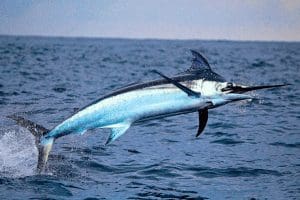
Mating and Reproduction:
Swordfish engage in an elaborate mating ritual that typically takes place near the ocean’s surface. During this courtship display, males and females swim together, circling each other and flashing their brilliant colors. Once mating occurs, the female releases her eggs into the water, while the male simultaneously fertilizes them externally. The fertilized eggs, known as embryos, develop and hatch into larvae.
Larval Stage:
After hatching, swordfish larvae are small and transparent, measuring only a few millimeters in length. They possess a distinct body shape and specialized fin structures that enable them to drift with ocean currents. During this stage, the larvae feed on microscopic organisms and gradually grow in size.
Juvenile and Sub-Adult Stage:
As the swordfish larvae grow, they transition into the juvenile stage. At this point, they begin to develop the characteristic physical features of adult swordfish, including their elongated bodies and sword-like bills. Juvenile swordfish typically inhabit shallower coastal waters, where they find abundant food sources and suitable habitat.
Migration:
Swordfish are known for their extensive migrations across vast distances. They undertake these journeys in search of suitable breeding grounds, favorable feeding areas, and optimal environmental conditions. These migrations can span hundreds or even thousands of miles, demonstrating the swordfish’s remarkable navigational abilities and adaptability to different oceanic regions.
Feeding Patterns:
Swordfish are apex predators and exhibit a varied diet. They primarily feed on other fish species, such as mackerel, herring, and squid. Utilizing their remarkable speed and hunting abilities, swordfish actively pursue prey or employ ambush tactics to capture their meals. They are opportunistic feeders, taking advantage of available food sources and adapting their feeding strategies based on the abundance and availability of prey.
Lifespan:
The lifespan of a swordfish varies, but they typically live between 9 and 15 years. However, some individuals have been known to live longer. The lifespan of a swordfish can be influenced by factors such as predation, environmental conditions, and fishing pressure.
Ecological and Economic Importance.🐟
The swordfish holds significant ecological and economic importance, playing a vital role in marine ecosystems and supporting various industries. Understanding its ecological and economic contributions is crucial for conservation and sustainable management.
Ecological Importance:
As an apex predator, the swordfish helps regulate the balance of fish populations in the ocean. By controlling the abundance of prey species, it helps maintain the health and stability of marine ecosystems. The presence of swordfish indicates a healthy ecosystem, as they occupy a crucial position in the food chain.
Furthermore, swordfish migrations have broader ecological implications. Their movements transport nutrients across different oceanic regions, benefiting other marine organisms and contributing to the overall productivity of the marine environment. The presence of swordfish also influences the behavior and distribution of their prey, shaping the dynamics of marine communities.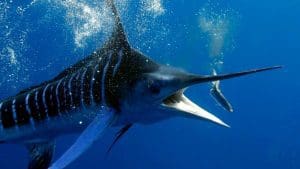
Economic Importance:
The swordfish holds substantial economic value, supporting commercial and recreational fishing industries worldwide. It is a highly sought-after species for its meat, which is known for its firm texture and mild flavor. Swordfish is a prized ingredient in many cuisines and is popular among seafood enthusiasts. The demand for swordfish drives commercial fishing operations, providing livelihoods for fishermen and supporting local economies.
Moreover, recreational fishing for swordfish is a popular activity, attracting anglers from around the world. It contributes to the tourism industry, as enthusiasts seek the thrill of catching these powerful and elusive fish. Sport fishing charters, equipment sales, and related services generate revenue and employment opportunities in coastal communities.
However, it is important to manage the swordfish fishery sustainably to ensure its long-term viability. Overfishing and inadequate fishing practices can deplete swordfish populations, disrupting the ecological balance and threatening the economic sustainability of the industry.
Conservation and Management:
Recognizing the ecological and economic importance of swordfish, conservation efforts and management measures have been implemented. International organizations, such as regional fishery management bodies, work to regulate fishing quotas, promote responsible fishing practices, and protect critical habitats for swordfish.
Conservation initiatives also focus on reducing bycatch, the unintentional capture of non-target species, to minimize the impact on marine biodiversity. By employing measures such as gear modifications, improved fishing techniques, and monitoring programs, conservation efforts aim to safeguard swordfish populations and ensure their ecological and economic sustainability.
If you want to learn about another commercially important fish, I invite you to read our article about the bluefin tuna.

